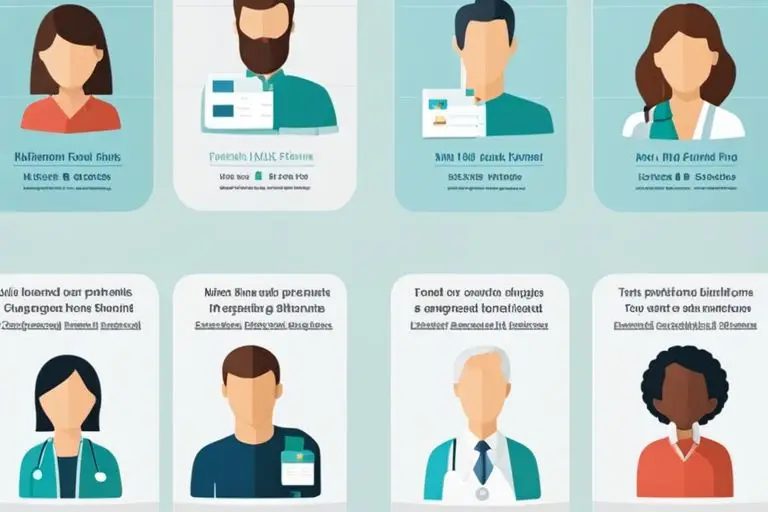Most healthcare providers understand the importance of personalized communication with their patients, especially in the field of Ear, Nose, and Throat (ENT) care. By segmenting your patient list into pediatric, adult, and senior categories, you can effectively tailor your emails and SMS messages to meet the specific needs and preferences of each group. This targeted approach not only improves patient engagement and satisfaction but also enhances the overall quality of care provided. In this blog post, we will explore the benefits of segmenting your patient list and provide strategies for creating customized communication plans for pediatric, adult, and senior ENT patients.
The Basics of Patient Segmentation
Defining Pediatric, Adult, and Senior Segments
On your patient list, it is crucial to categorize individuals into pediatric, adult, or senior segments to ensure tailored healthcare communication. Pediatric patients may require information on ear infections, allergies, or hearing screenings. Adults may need updates on sinusitis, voice disorders, or hearing aids. Seniors might benefit from reminders about age-related hearing loss, tinnitus, or vertigo assessments.
Collecting and Organizing Patient Information
An effective way to segment your patient list is by collecting and organizing demographic data, medical history, and appointment preferences. This information can be gathered through patient intake forms, electronic health records, and communication with your front desk staff. By centralizing and updating this data regularly, you can personalize your emails and SMS reminders more effectively.
Segments
Segmenting your patient list allows you to tailor your communication strategies to meet the specific needs of pediatric, adult, and senior patients. By targeting the right audience with relevant information, you can improve patient engagement and satisfaction levels. Understanding the demographics and preferences of each segment will help you craft personalized messages that resonate with your patients and enhance their overall healthcare experience.
Tailoring Pediatric ENT Care Communication
Understanding the Needs and Preferences of Parents
Understanding the needs and preferences of parents is crucial when tailoring pediatric ENT care communication. Parents are often the primary decision-makers when it comes to their child’s healthcare, so it’s important to consider their perspectives, concerns, and communication preferences. Taking the time to understand what information they value most and how they prefer to receive it can greatly improve the effectiveness of your messaging.
Crafting Effective Messaging for Pediatric Audiences
Parents play a key role in their child’s healthcare journey, so crafting effective messaging for pediatric audiences involves tailoring communication that resonates with them. Messages should be clear, concise, and empathetic, addressing common concerns such as ear infections, allergies, or tonsil issues. Using language that is easy to understand and offering reassurance can help alleviate any anxieties parents may have about their child’s ENT care.
For instance, when sending appointment reminders or post-visit instructions to parents of pediatric patients, it’s important to frame the information in a way that is both informative and reassuring. Providing clear instructions on how to prepare for a procedure or what to expect during a visit can help parents feel more confident and empowered in their role as caregivers.
Engaging Adult Patients in ENT Care
Personalizing Content for Adult Patients
For adult patients in ENT care, it is imperative to personalize content to cater to their specific needs and concerns. Addressing common ENT issues such as allergies, sinusitis, or hearing loss in a way that resonates with adult patients can significantly improve engagement and ultimately lead to better health outcomes.
Utilizing Technology for Enhanced Adult Patient Communication
Adult patients are increasingly tech-savvy and prefer convenient communication methods. Utilize technology such as email reminders, patient portals, and telehealth services to enhance communication with adult patients. These tools can streamline appointment scheduling, provide educational resources, and enable secure messaging for quick and efficient communication.

Communicating with Senior ENT Patients
Special Considerations for Senior Patient Communication
Your communication with senior ENT patients must be tailored to their unique needs and preferences. Seniors may have hearing or vision impairments that make it challenging for them to understand complex medical jargon or detailed instructions. It is important to speak clearly, use simple language, and take the time to ensure they comprehend the information being conveyed.
Accessible and Clear Messaging Strategies for Seniors
To effectively communicate with senior ENT patients, ensure that your messaging is accessible and easy to understand. Use larger font sizes in written materials, provide audio options for those with visual impairments, and consider using visual aids to supplement verbal instructions. Additionally, offering follow-up consultations or providing written summaries of important information can help reinforce key points and ensure better patient comprehension.
The goal of accessible and clear messaging strategies for seniors is to enhance patient understanding and ultimately improve medical outcomes. By implementing these communication techniques, healthcare providers can empower senior ENT patients to take an active role in their healthcare and make informed decisions about their treatment plans.

Implementing Segmented Communication Strategies
Now, segmenting your patient list is just the first step. The real value comes from implementing segmented communication strategies tailored to each group. By identifying the specific needs and preferences of pediatric, adult, and senior ENT patients, you can craft targeted emails and SMS that resonate with each segment. For expert guidance on effective communication strategies, refer to SPCH-1113-Speech-&-Communication.pdf.
Integrating Segment-Specific Approaches into Your Practice
For seamless integration of segment-specific approaches into your practice, start by understanding the unique characteristics and communication preferences of pediatric, adult, and senior ENT patients. Tailor your messaging to address their needs and concerns, ensuring that each segment feels understood and valued.
Evaluating and Adjusting Your Communication Tactics
One of the keys to successful segmented communication is continuous evaluation and adjustment of your tactics. Monitor the performance of your emails and SMS campaigns by tracking metrics like open rates, click-through rates, and patient engagement. Use these insights to refine your communication strategies and ensure that they are effectively reaching and resonating with each patient segment.
Communication strategies tailored to pediatric, adult, and senior ENT patients can significantly enhance patient engagement and satisfaction. By implementing segment-specific approaches and continuously evaluating and adjusting your tactics, you can create personalized and effective communication that improves patient outcomes and strengthens relationships.
To wrap up
Considering all points discussed, segmenting your patient list and tailoring your emails and SMS for pediatric, adult, and senior ENT care is crucial for effectively communicating with your patients and meeting their specific needs. By understanding the unique characteristics and preferences of each age group, you can provide personalized and relevant information that resonates with them, ultimately improving patient engagement and satisfaction. Implementing these strategies will not only enhance the patient experience but also strengthen the relationship between your ENT practice and your patients across all age groups.








